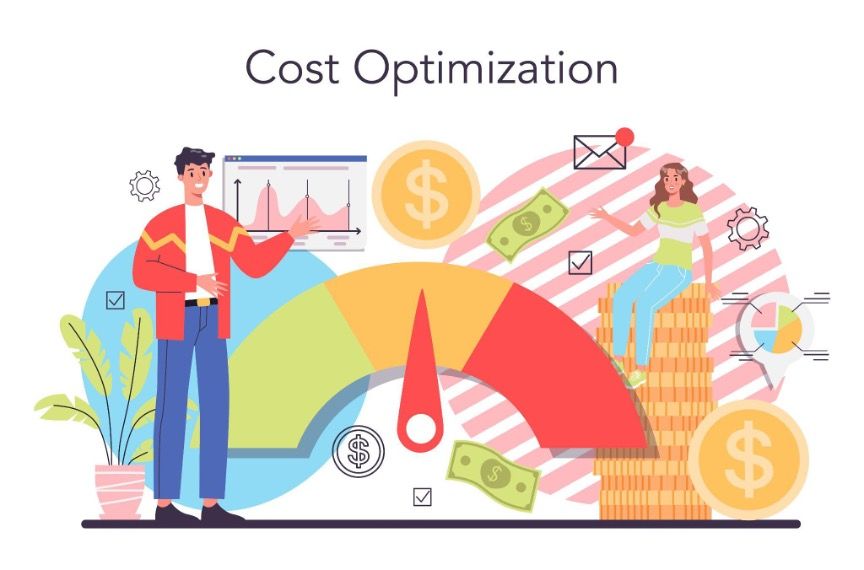Cost Optimization Strategies for Maximizing Production Efficiency with Spot Instances

Businesses are always looking for ways to optimize their costs without compromising on performance. Cloud providers like Amazon Web Services (AWS) offers a cost-effective solution to this problem in the form of Spot Instances. Spot Instances are spare compute capacity in the cloud that businesses can use to run their applications at a significantly reduced cost. In this article, we will discuss how to optimize costs and maximize production efficiency with Spot Instances.
Exploring the Benefits of Spot Instances
Spot Instances offer several advantages to businesses that are looking to optimize their costs. Firstly, they are significantly cheaper than On-Demand Instances, allowing businesses to lower their overall compute costs. Secondly, Spot Instances provide a flexible solution to businesses that require compute capacity on a short-term or intermittent basis.
Lastly, Spot Instances can be used for a wide range of tasks, from hosting websites to making software.
Differentiating between On-Demand and Spot Pricing
The biggest difference between On-Demand and Spot pricing is the cost. On-Demand Instances are typically much more expensive than Spot Instances. Spot Instances are discounted by up to 90%, making them perfect for businesses with limited budgets.
On-Demand Instances are typically more reliable than Spot Instances. This is because Spot Instances may be terminated at any point in time by AWS, while On-Demand Instances are guaranteed to remain active until required. This means that businesses should be aware of the risks associated with using Spot Instances and plan accordingly.
Best practices for EC2 Spot Instances
When using EC2 Spot Instances, it is important to understand the risks associated with them and plan accordingly. Firstly, businesses should be aware that Spot Instances may be terminated at any point in time by AWS. This means that businesses should always ensure that their applications are designed to be resilient to Spot Instance termination.
Secondly, businesses should ensure that their applications are designed to recover quickly when a Spot Instance is terminated. This can be done by using an auto-scaling group and setting up the appropriate triggers. This will ensure that the applications can recover quickly in the event of a Spot Instance termination.
Thirdly, businesses should normally use Spot Instances for applications that require compute capacity on a short-term or intermittent basis. This will ensure that businesses are taking full advantage of the cost savings offered by Spot Instances. However, later in this article we will discuss some tools that allow businesses to run production stateful workloads on Spot Instances.
Finally, businesses should monitor their Spot Instance usage and ensure that their compute costs are kept to a minimum.
Creating an Effective Spot Instance Strategy
Creating an effective Spot Instance strategy is essential for businesses that want to optimize their compute costs. The first step in creating an effective Spot Instance strategy is to identify applications that are suitable for Spot Instances.
Once the applications have been identified, businesses should evaluate the cost savings associated with using Spot Instances. This can be done by comparing the cost of On-Demand Instances with the cost of Spot Instances. This will help businesses determine the most cost-effective solution for their applications.
Businesses should also consider the risks associated with using Spot Instances. This means that businesses should ensure that their applications are designed to be resilient to Spot Instance termination and that they have a plan for recovering quickly in the event of a Spot Instance termination.
When Amazon EC2 is going to interrupt your Spot Instance, it emits an event two minutes prior to the actual interruption. This allows your business to quickly react to the event and deploy additional resources if needed.
Leveraging Spot Instance for Production Workloads
Spot Instances can be used for production workloads, but it is important to understand the risks associated with them and plan accordingly.
Production workloads can be stateless, like batch jobs or CI/CD pipelines, or stateful, like dev machines or big data.
Firstly, businesses should ensure that their applications are designed to be resilient to Spot Instance termination, which, as we mentioned, provides a 2-minute warning to allow businesses to quickly react during such events. This means that applications should be designed to recover quickly in the event of a Spot Instance termination.
Using Spot Instances for stateless workloads is much easier, as normally these type of workloads don't need to be running all the time and can easily recover if terminated. It's much more complex to use Spot Instances with stateful workloads where the data or IPs should not be lost.
In the next paragraph, we will discuss some of the solutions that will help businesses achieve maximum production efficiency for stateful workloads with Spot Instances.
Automate Spot Usage for Stateful Production Workloads
When managing workloads, the idea of data consistency and integrity is essential. When using EC2 Spot Instances, which are conceptually ephemeral and subject to revocation at any time, this aspect may not be as trivial as when using On-Demand instances.
Before attempting to use Spot Instances for stateful workloads, you should take into account a number of factors, such as:
● Do you need to maintain your private?
● Do you need to persist your local volume data?
● Can your workload be run on various instance families and types?
Once you have a better idea of what the requirements are for your workloads, you can start implementing some customised automations to detect when a Spot Instance is about to be terminated.
With this event-based architecture, you could launch an automation to stop a database service on your workload, save the private IP and the local volumes, and at the same time launch a new instance, which could be either another Spot Instance or an on-demand instance. Once the new instance is up and running, you can reattach the volume you saved before and the private IP.
Consider the Elasticgroup product from Spot.io, now a NetApp company, or CloudOptimo if you would prefer to use a pre-built service that handles all of this for you.
Conclusion
Spot Instances are a cost-effective solution for businesses that require compute capacity at a low cost. They are significantly cheaper than On-Demand Instances and can be used for a variety of applications. However, businesses should be aware of the risks associated with using Spot Instances and plan accordingly. By following the best practices outlined in this article, businesses can maximize their production efficiency and optimize their costs with Spot Instances.
